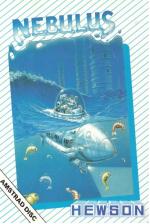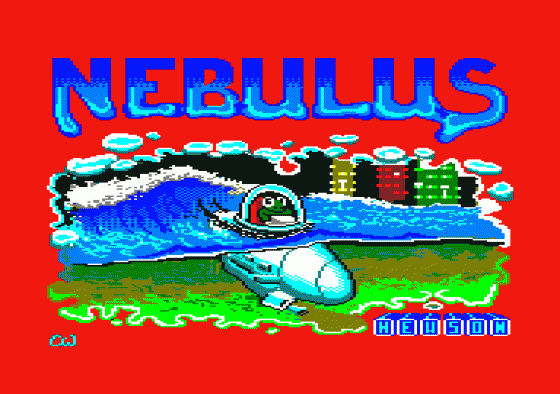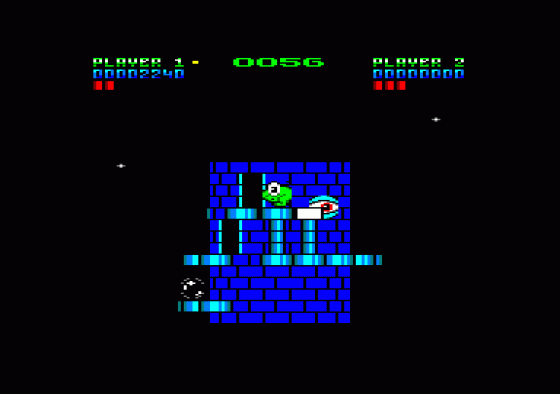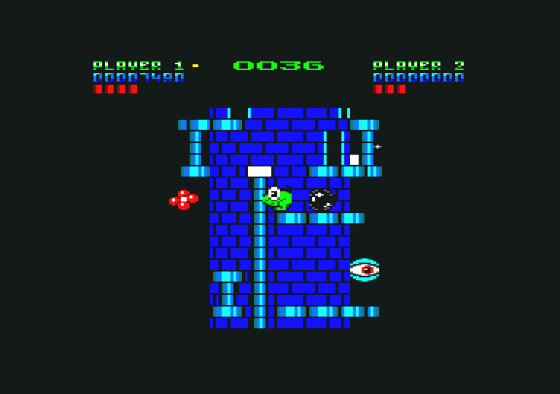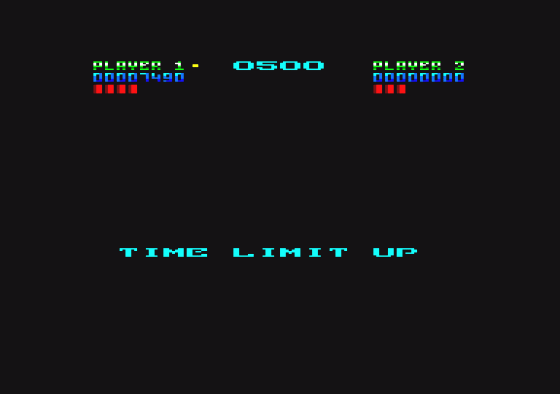
Amstrad Computer User
 1st June 1988
1st June 1988
Categories: Review: Software
Publisher: Hewson Consultants
Machine: Amstrad CPC464
Published in Amstrad Computer User #43
Simon Rockman gets an eyeful of Hewson's tower game
Nebulus
I am pretty chuffed that Hewson has released Amstrad Nebulus. It is a game I pestered Andrew Hewson to have converted to the Amstrad. He claimed that it would be too slow. I spoke to Chris Wood, sometime ACV contributor and Amstrad expert, who thought he could get the speed up. So I gave Andrew Chris's number and Chris Andrew's.
The result is a game for which the Commodore and Spectrum versions won a major industry award. Chris has made the Amstrad version, prettier, slicker and every bit as much fun.
Simple Ideas Are The Best
The story is simple. You are a small half pig, half frog-like creature given the task of overcoming evil towers each between four and six screens high. If you climb to the top the tower will be destroyed. Destroy all eight towers to win.
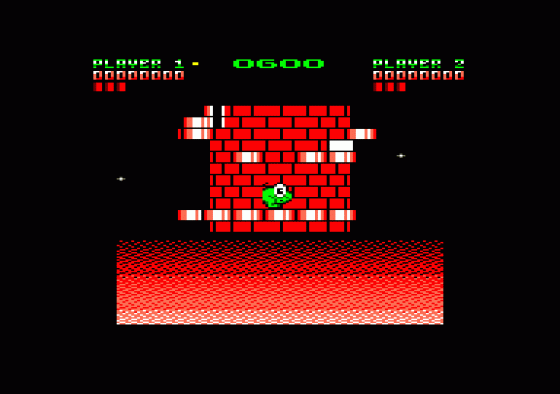
Like television's famous Fred Dibner, you must scale the outside. There are stone ledges around the perimeter of the tower which spiral upwards.
Simply hop from ledge to ledge to get to the top. Well that would make a dull game. The tower may rotate smoothly and the ledges may be excruciatingly pretty, but graphics do not make a game in themselves, whatever Cinemaware says.
So to provide a challenge there are nasty creatures, denizens of the tower. The first tower, the tower of eyes, has cyclops-like aliens, Other nasties to avoid are the yellow robots, the glass bubbles which can be frozen with a single shot, and cherry red balls which can be completely destroyed.

The alien you will learn to hate is small, red and flies around the tower. This was supposed to be a bird, but the programmers at Hewson couldn't get the graphics quite right, so the bird became a pile of blobs.
Up And Around
A spiral staircase and a few aliens would not be much of a challenge to the average Konix juggler, so there are extra problems. The staircase has bits missing. You can jump over holes which are one ledge wide but bigger gaps require more drastic action.
Doorways lead through the tower, often to the next set of steps. Great strides can be made in your progress up the tower by using a lift.
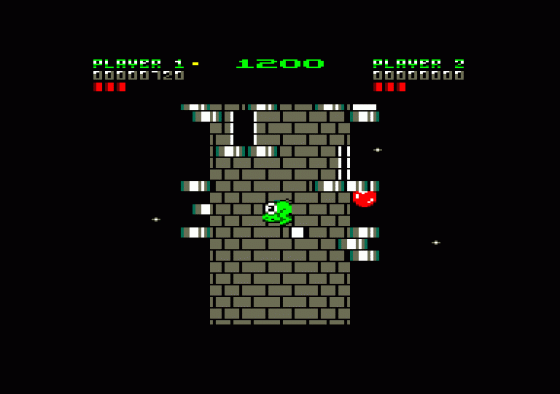
Sometimes you may find that there is no way up and the ledge below may be more profitable. When this happens you need an alien to hit you.
Only falling all the way to the bottom of the tower and into the water below will lead to your losing a life. Otherwise contact with an alien is painful - not deadly - and you fall to a ledge below.
Pogo is not equally balanced, so just turning round on the spot can make him fall. He's not what you could call a pretty creature, but beautifully animated. There are 74 frames, divided up into sections like walking in each direction, turning round, tumbling in each direction and falling.

Chris describes the other aliens as "eyes, robots, spinning things and other spinning things which look very pretty but we haven't thought of names for them yet, probably never will. They kill you all the same".
Nebulus took three months to convert, although, like most programmers, Chris says that if he was starting again he would do things very differently. He may well get the chance to do so because his next job for Hewson is to convert the game for the 16 bit machines.
Like all Chris's games Nebulus was written on a Joyce (PCW8512) using Devpac 80 version 2. He likes this set-up "because it allows me to assemble to 3in disc on the PCW and then pop it in the 6128 to run it",
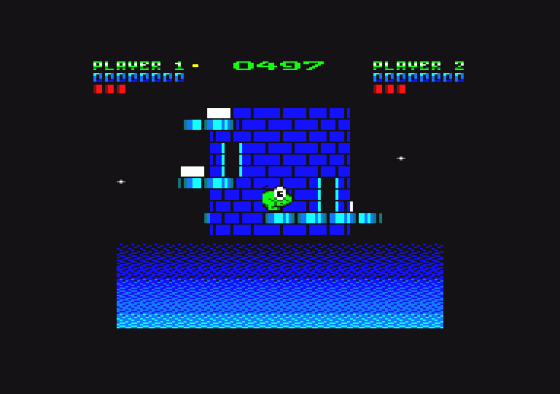
The program is big, there is over 290k of source code and it takes more than three minutes to assemble. Chris will usually spend this time riding his unicycle or juggling, He sometimes does both at once.
The object code is so big that it fills the CPC and knocks out the firmware. Just to load the code in he has to use a direct sector read routine which was written by ZZKJ, another ACU contributor of long standing.
The main problem with the conversion was, as Andrew Hewson correctly observed, speed. The Amstrad version can just about keep up with the Spectrum's frame rate of 17 frames per second. The difference is only really noticeable when Pogo walks through a door and the whole tower rotates.
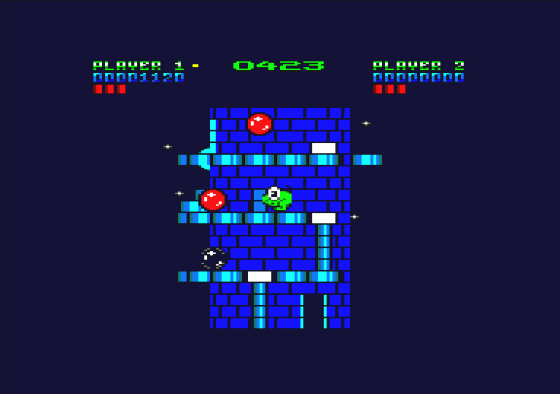
The result is that not only does the Amstrad version look much prettier ana sound much better than the Speccy one but it plays lust as well. Credit for the sound goes to Dave Rodgers who honed his routines to use less and less processing time, halving the raster period it needed during the time it took Chris to write the game. All the music fits into a shade under 3k, but it sounds great.
The game was designed flat and then wrapped around the cylinder. What makes a ledge disappear as it goes round is a routine which draws the nearer ones so they overwrite the further ones.
To hide the aliens behind the tower is more complicated. The position of the aliens is calculated as though the tower was unrolled, a table holds the possible positions and then a clever bit of code uses a 16 level depth comparison table to wrap the whole lot around the tower.
Nebulus was written for the Commodore 64 and the Spectrum by John Philips, who made his name in the Amstrad world with Impossiball. The two games share the Hewson trademark of being highly original and well programmed. It is strange that Hewson can manage to produce so rnwly simple yet electrifying and original games which the big companies fail to deliver. With a special distribution deal through Gremlin Graphics, Hewson games should become easier to find, so look for Nebulus in the shops and in the charts.

